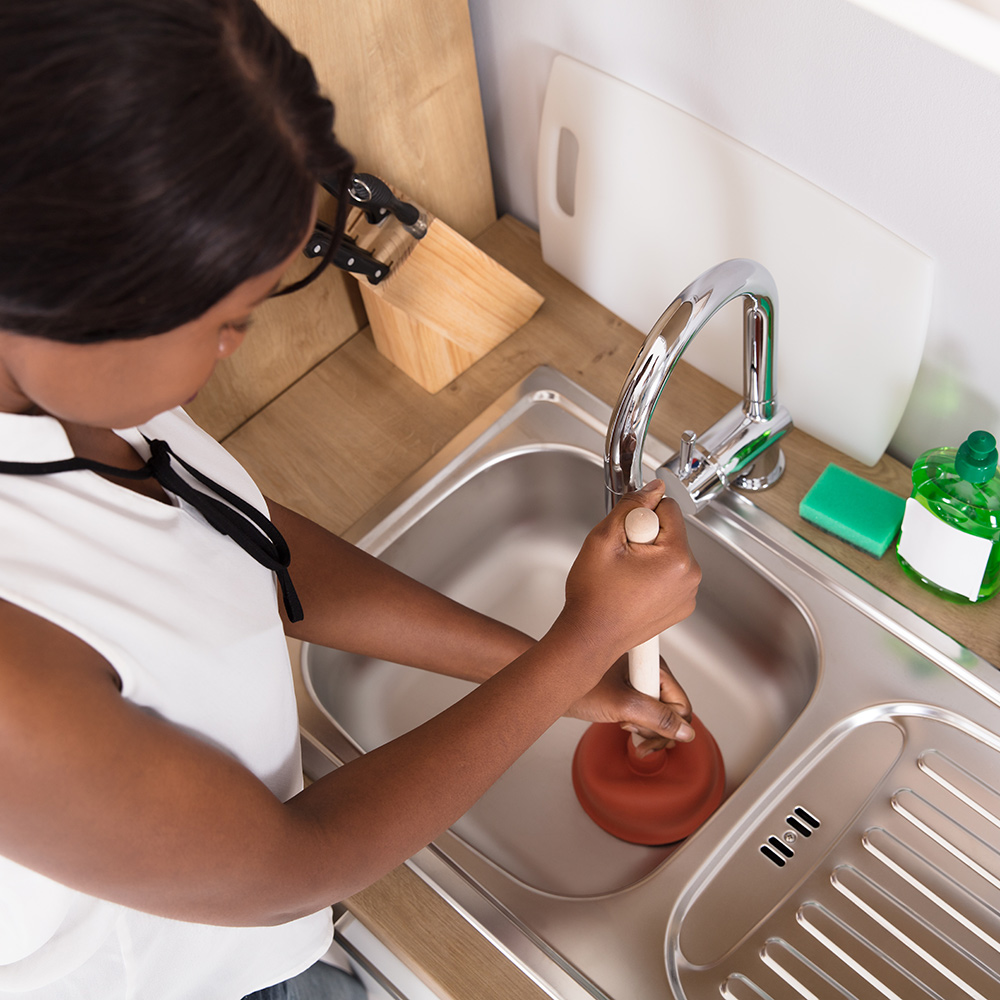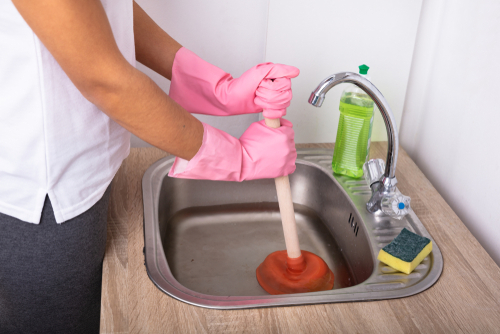Efficient Plunger and Drain Cleaners Application: Key Advice
Efficient Plunger and Drain Cleaners Application: Key Advice
Blog Article
The content which follows about How To Use Your Toilet Plunger Correctly in 5 Easy Steps is immensely intriguing. Give it a try and make your own personal assumptions.

Intro
Appropriate upkeep of house drains is vital for stopping obstructions and guaranteeing smooth water flow. Among the secret tools in every property owner's toolkit is the bettor, along with numerous drainpipe cleansers designed to deal with stubborn blockages efficiently. This short article discovers how to make use of bettors and drain cleaners successfully to maintain your drains pipes moving openly.
Section 1: Understanding Plungers
Sorts of Plungers
There are numerous types of bettors available, each made for various sorts of drains and blocks. The most common types include cup plungers, flange bettors, and accordion plungers.
Exactly How Plungers Job
Bettors deal with the principle of producing stress and suction to dislodge obstructions. When appropriately used over a drainpipe, they create a vacuum that can take out debris or separate clogs.
Picking the Right Bettor
Selecting the appropriate bettor depends upon the type of drainpipe and the nature of the blockage. Cup bettors are excellent for sinks and bathtubs, while flange bettors are better matched for toilets because of their layout.
Common Errors with Bettors
Avoiding these blunders ensures efficient plunging: improper seal around the drain, not enough force, and not clearing surrounding debris.
Area 2: Making Use Of Plungers Effectively
Preparation
Prior to plunging, make certain the plunger covers the drainpipe totally and forms a tight seal. Clear any noticeable particles around the drain opening.
Strategy
Beginning with gentle plunging movements to develop suction. Increase stress progressively, making use of a steady rhythm. Repeat as necessary till the drainpipe removes.
Troubleshooting Tips
If diving does not function, try adjusting the seal, using petroleum jelly for a far better seal, or using a various type of bettor.
Area 3: Understanding Drainpipe Cleaners
Sorts Of Drain Cleaners
Drain pipes cleaners can be chemical or enzymatic. Chemical cleansers utilize strong chemicals to dissolve clogs, while chemical cleaners utilize natural enzymes to break down raw material.
Just How Drain Cleaning Company Work
Chemical cleaners respond with blockages to liquify them, while enzymatic cleaners break down natural materials like hair and oil without harming pipes.
Security Considerations
Always put on handwear covers and eye defense when making use of chemical drain cleaners. Make sure ample ventilation and comply with maker guidelines meticulously.
Eco-Friendly Alternatives
Consider using vinegar and baking soda or enzyme-based cleaners for environment-friendly choices that are more secure for pipelines and the setting.
Area 4: Using Drainpipe Cleaners Effectively
Application Techniques
Pour chemical cleaners straight into the drainpipe opening. Allow them to work for the suggested time before flushing with hot water. Enzymatic cleansers ought to sit overnight.
Safety measures
Stay clear of mixing various types of cleansers, as this can generate poisonous fumes. Never ever utilize chemical cleansers together with a bettor, as spilling can occur.
Dealing With Persistent Obstructions
For persistent blockages, take into consideration making use of a pipes serpent or calling a professional plumbing technician to avoid damage to pipes.
Conclusion
Finally, comprehending exactly how to utilize plungers and drainpipe cleaners successfully is necessary for preserving healthy plumbing systems. By picking the right devices and methods, property owners can tackle small clogs and prevent major pipes problems down the line.
How To Properly Use A Plumbing Snake To Clear Drains
When any drain clogs in our home arise, we tend to gravitate toward the plunger and little else. In cases where the plunger and its vacuum-created pressure are not able to clear clogs, many immediately move to harmful chemicals or simply call their plumber to fix the issue.
we’re happy to help with all drain cleaning needs and concerns. This includes informing you on a few other home remedies you may have at your disposal for minor to moderate clogs, one of which is the use of a plumbing snake. Many people have never used one of these before – let’s go over the steps to take when your drain clogs and you have a plumbing snake available.
Attempt Plunger Use
The first step here, as we noted above, should indeed be to grab your plunger when you notice a drain clog and attempt to resolve it this way. If you’re unsure how to use a particular type of plunger, our plumbers can answer any questions you have. If this doesn’t do the trick, however, you move on to the snake.
Locate And Prepare Snake
A plumbing snake is a metal or plastic device that’s generally about a quarter of an inch thick. It’s design with significant extensions, meant to reach down into your clogged drain and push the clog out. Snakes also contain drain augers that will latch onto and push stubborn blockages.
If your plunger doesn’t clear a clog, locate your snake and bring it to the drain in question. We also recommend keeping a bucket nearby to collect the clog once you pull it out, plus we’d advise wearing goggles and possibly protective gloves.
Feed Snake
Once you’re ready to go, feed the snake slowly down the drain, using the crank device it comes with to keep it moving until it finds the clog. Once this happens, much of the clog will be latched onto the coil so you can pull it out, while the rest will simply break up and flow downward.
Detach Debris
Remove the snake slowly from the drain, and once you’ve done so, pick off any debris that’s stuck to the coil. This is another area where wearing gloves is a must.
Flush Drain
Finally, take a few minutes to ensure the snake has done its job correctly. If you’ve been using it on a toilet, flush the toilet a couple times and make sure everything flows well. If you’ve used it on a different drain, flush it with some room temperature water.
https://www.mybuddytheplumber.com/blog/how-to-properly-use-a-plumbing-snake-to-clear-drains/

Application Techniques
Pour chemical cleaners straight into the drainpipe opening. Allow them to work for the suggested time before flushing with hot water. Enzymatic cleansers ought to sit overnight.
Safety measures
Stay clear of mixing various types of cleansers, as this can generate poisonous fumes. Never ever utilize chemical cleansers together with a bettor, as spilling can occur.
Dealing With Persistent Obstructions
For persistent blockages, take into consideration making use of a pipes serpent or calling a professional plumbing technician to avoid damage to pipes.
Conclusion
Finally, comprehending exactly how to utilize plungers and drainpipe cleaners successfully is necessary for preserving healthy plumbing systems. By picking the right devices and methods, property owners can tackle small clogs and prevent major pipes problems down the line.
How To Properly Use A Plumbing Snake To Clear Drains
When any drain clogs in our home arise, we tend to gravitate toward the plunger and little else. In cases where the plunger and its vacuum-created pressure are not able to clear clogs, many immediately move to harmful chemicals or simply call their plumber to fix the issue.
we’re happy to help with all drain cleaning needs and concerns. This includes informing you on a few other home remedies you may have at your disposal for minor to moderate clogs, one of which is the use of a plumbing snake. Many people have never used one of these before – let’s go over the steps to take when your drain clogs and you have a plumbing snake available.
Attempt Plunger Use
The first step here, as we noted above, should indeed be to grab your plunger when you notice a drain clog and attempt to resolve it this way. If you’re unsure how to use a particular type of plunger, our plumbers can answer any questions you have. If this doesn’t do the trick, however, you move on to the snake.
Locate And Prepare Snake
A plumbing snake is a metal or plastic device that’s generally about a quarter of an inch thick. It’s design with significant extensions, meant to reach down into your clogged drain and push the clog out. Snakes also contain drain augers that will latch onto and push stubborn blockages.
If your plunger doesn’t clear a clog, locate your snake and bring it to the drain in question. We also recommend keeping a bucket nearby to collect the clog once you pull it out, plus we’d advise wearing goggles and possibly protective gloves.
Feed Snake
Once you’re ready to go, feed the snake slowly down the drain, using the crank device it comes with to keep it moving until it finds the clog. Once this happens, much of the clog will be latched onto the coil so you can pull it out, while the rest will simply break up and flow downward.
Detach Debris
Remove the snake slowly from the drain, and once you’ve done so, pick off any debris that’s stuck to the coil. This is another area where wearing gloves is a must.
Flush Drain
Finally, take a few minutes to ensure the snake has done its job correctly. If you’ve been using it on a toilet, flush the toilet a couple times and make sure everything flows well. If you’ve used it on a different drain, flush it with some room temperature water.
https://www.mybuddytheplumber.com/blog/how-to-properly-use-a-plumbing-snake-to-clear-drains/

I hope you liked our post on How to Unclog Your Sink with a Plunger. Thank you so much for spending some time to read our blog post. If you enjoyed reading our post kindly consider to share it. Many thanks for your time. Revisit us soon.
Visit The Following Page Report this page